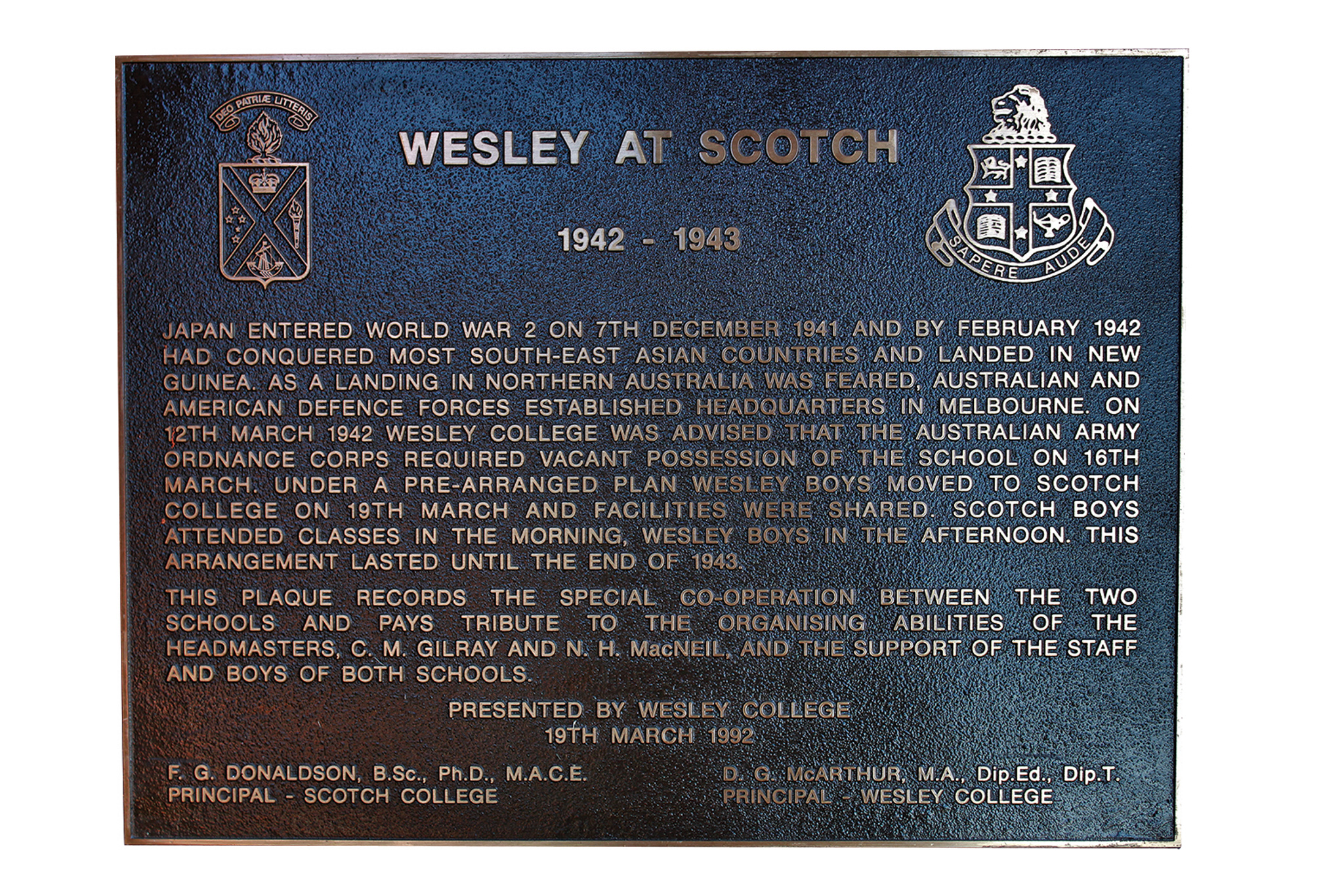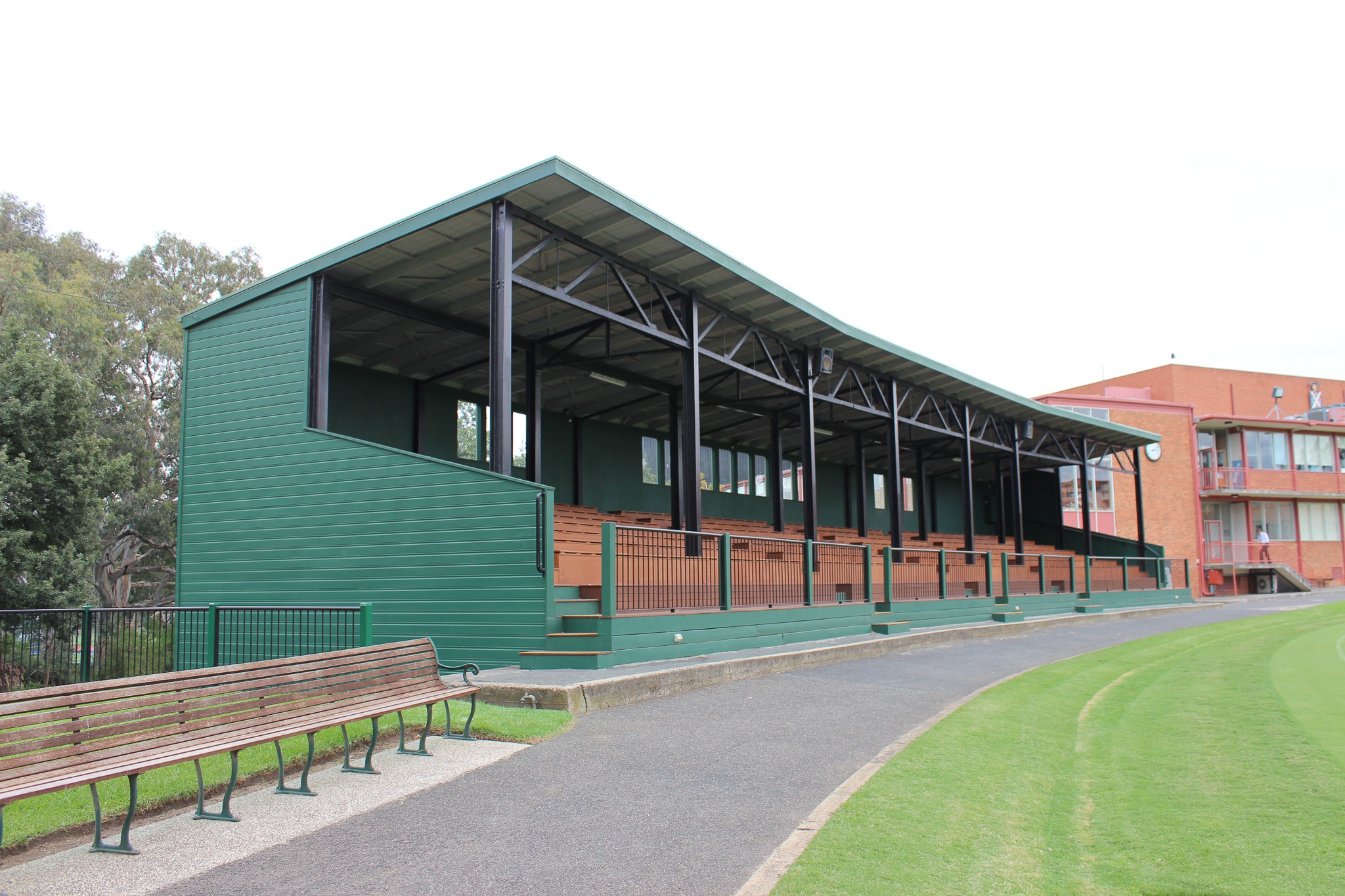<< Back to Lion homepage
Wesley goes to Scotch: 80 years on

This event has been well documented over the years, but it is worth recalling on the 80th anniversary of the commencement of this unique time in the College's history:
In March 1942, with Australia and its allies reeling from the Japanese invasion of virtually every country north of Darwin, Melbourne was the centre of a huge military response. Premises were required for a rapidly expanding military administration including the arrival of General MacArthur and the Americans. St Kilda Road was a prime hub for the military and Wesley was ‘commandeered’ by the Australian Army for its Ordnance operations.
Scotch College was quick to offer to share its Hawthorn campus with the Senior School. The Junior School also moved to the former premises of St Margaret’s Girls School at Mayfield Ave, Malvern. In addition, space was found for the Senior School boarders at the mansion of Kooringa, Hamilton Road, Malvern and for the Junior School lads at Bromley, Irving Road, Toorak.
 The infamous Green Grandstand at Scotch College remains today, a lasting benefit of the Wesley at Scotch era
The infamous Green Grandstand at Scotch College remains today, a lasting benefit of the Wesley at Scotch era
On 19 March 1942, the Senior College boys assembled for the first time in Scotch’s Memorial Hall. They were welcomed by Scotch’s headmaster, Gilray, who quickly handed over to Wesley’s MacNeil, and Wesley started its occupation of its temporary new home. Wesley’s centennial history records the following:
'The magnitude and complexity of the problem of fitting two schools into one set of buildings were great. Scotch used the classrooms in the mornings, Wesley in the afternoons. It meant a very early start for Scotch, and a very late finish for Wesley.
Wesley played sport (no longer compulsory) in the mornings, Scotch in the afternoons. Both schools used the chapel, swimming pool and playing fields. The bulk of Wesley's library was amalgamated with Scotch's Mackie Library, and both schools used the combined collection. The Scotch staff invited the Wesley staff to use the masters' common room as their own, until a temporary staff and administration block was built for Wesley in the Scotch grounds.'
In addition to the staff and administration block, a pavilion for the exclusive use of Wesley boys for sporting and shelter purposes was built facing the main oval. This pavilion, now known as the Green Grandstand, still stands. The cost of construction was paid for by the Army. Scotch later acquired the pavilion and other buildings from the Army after Wesley left.
In compensation for providing its facilities, Scotch received one sixth of Wesley’s annual tuition fees; a grand sum of two guineas per student a term.
In early 1944, the Senior School returned to St Kilda Road, but the Army still required the Junior School facilities so these students did not return until the start of 1946.
The boys of that era always consider themselves somewhat unique that they had the Scotch and/or St Margaret’s experience. Perhaps winning the Head of the River and Athletics in 1942 assisted in making this a special time!
A matter that is always mentioned is the friendly relationships between the boys of both schools. This is no better highlighted than during the football season when Wesley played its ‘home’ matches in the afternoon. Scotch boys would barrack for the Wesley team against visiting schools as Wesley boys were attending their afternoon classes. In recent years, the OWCA and OSCA held War Year Reunions to enable reminisces of those days.
A plaque in the Hattam Quad at Wesley records the shared experience. A duplicate of this plaque is also at Scotch, adjacent to a drinking fountain provided as a farewell present.
Contributed by Philip Powell (OW1973), author, historian, former Vice President of Council, honorary Fellow of Wesley College and regular contributor to Lion magazine
